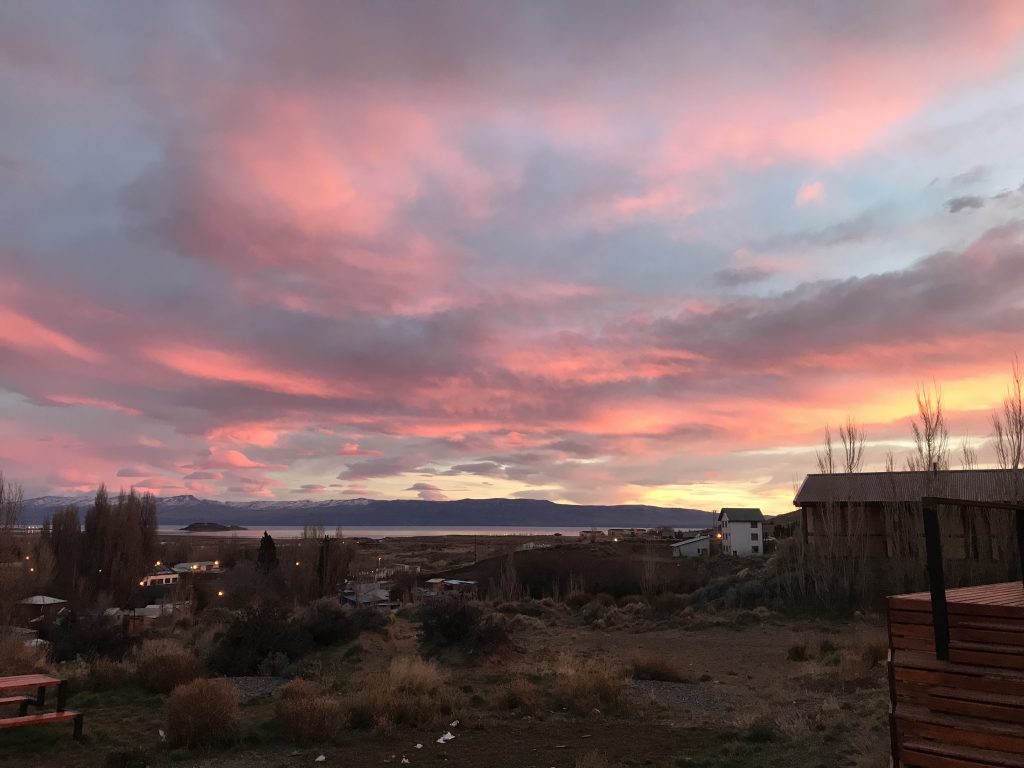Something Subtle That I Miss
Read MoreI Moved to New York During the Pandemic
Read MoreNortheast US Nerd Tour
Read MoreIsolation in El Calafate
Read MoreWhy Isn’t Soundproofing in Apartment Buildings Better?
Read MoreIsolation in El Calafate
2019 August 16
I haven’t published anything for a while (again), but I haven’t abandoned writing for the site.
New (ish) Site
You may have noticed some subtle changes around here.
I (semi) redesigned this site, though not in a total overhaul kind of way. I kept the same layout and design scheme from my last redesign, but made the underlying code do more with less. This may not mean anything to you, but you might notice that the pages load a lot faster now.
I also spent a long time moving from my old web host to one that’s cheaper and gives me more control. Most of you probably don’t care, but I’m now using a self-managed host (DigitalOcean) instead of a managed host (I was using FlyWheel), meaning that I will spend a lot less money per month for the same amount of speed and capacity. The downside is that using a self-managed host demands more of my time in management, monitoring, and keeping things up-to-date, but it’s totally worth it since it relates to my work and, as a web developer, it benefits me to understand more about related fields like server management.
But enough about that, here’s some travel stuff.
El Calafate
I wrote this while looking at this on the window to my left:

This view is from the America del Sur hostel in El Calafate, Argentina, and it’s very far south.

It’s one of the southernmost cities in the world. According to Wikipedia, it’s the 11th southernmost city including settlements of over 1,000 inhabitants and excluding Antarctica.
Despite being so far south, it’s not as extreme as you might imagine. El Calafate, 50 degrees south by latitude, lies only as far south as Paris lies north (technically 48 degrees north), or as far north as most of the US-Canadian border (technically 49 degrees north).
Despite this, it is very isolated.
In general, the continent of South America is isolated; it’s comparatively challenging to get here from other parts of the world. Patagonia, AKA southern South America and where El Calafate is located, could arguably be the most isolated part of the continent (a good contender would be the deepest parts of the Amazon).
Not many people visit South America from outside the continent compared to other regions of similar distances, and one of the biggest factors for this is cost.
For example, take a look at the typical costs of these round trip tickets leaving from Los Angeles
| Destination | Distance in miles | Typical Cost in USD |
| Buenos Aires | 6,118 | ~$1100 |
| Seoul | 5,953 | ~$500 |
| Vienna | 6,097 | ~$600 |
Even if you go crazy with it and look up a ticket from Los Angeles to Dubai, a distance of 8,315 miles, a ticket will still typically be cheaper than to Buenos Aires at around $900.
(The above tickets are how things generally are for those flights. To be honest, I didn’t do a whole ton of research so they could be way off, but I check these things a lot and still did some research. Also, I don’t care that one time you saw a ticket from Chicago to Rio de Janeiro for $20, or that you spent $2000 one time to go from Minneapolis to Chicago. Anecdotes don’t cancel out research and averages. The absolute cheapest I’ve ever seen a flight from North America to Argentina was still a bit more than $500, and that price quickly disappeared after the airline posted it.)
Part of the reason these cost so much is that South America is out-of-the-way compared to the rest of the world. It may not seem like it on most maps which tend to use the Mercator Projection, but if you actually study how it is on a globe, you’ll see that its nearest neighbors are the Pacific Ocean, which could almost be considered a hemisphere in its own right; the Atlantic Ocean, which isn’t as big but is still pretty massive in scale; North America; and Antarctica.

Of course, North America is South America’s truly closest neighbor. But global travel and trade routes show that North America travels much more to and from Europe and Asia.

Flights are disproportionately expensive between North and South America, and a big reason for these higher costs is that scheduling is tricky between the continents due to lack of timezone difference.
Airplanes that fly between the US and Europe, or between the US and Asia can be used somewhat constantly. Further, the timezone differences help coordinate connecting flights to other destinations than long-distance flights that are in a similar time zone, since most connections happen during daytime hours.
To better explain with an example, a flight from New York to Paris can leave in the evening and arrive in the morning/afternoon in Paris in time for its passengers to go on to their connecting flights. A short time later, that same plane can fly back from Paris in the evening and arrive in New York in the morning way before most other connecting flights take off. Then it repeats the cycle, being used for 2 long-haul flights per day on a route with good demand.
A similarly distanced flight from New York to Lima will typically leave New York in the evening and arrive in Lima the morning, on time for its passengers to connect to their final destinations. It could turn around in a few hours and take off from Lima in the late morning / afternoon and arrive in New York in the evening, but its connecting passengers would need to wait overnight in New York before continuing onto their connecting flights, and most people wouldn’t want to buy that flight due to such a long layover (I am a major exception to this kind of rule if the flight is cheap enough, but most people don’t like to travel like me). Instead, it can sell more flights by waiting 24 hours until the next evening to leave Lima and arrive in New York in the morning, giving its passengers a much shorter layover to continue onto their connecting flights.
For a clearer and more in-depth explanation of this with visuals, check out Wendover Production’s video on how airlines schedule flights:
Leaving Argentina
All this is to say that I am leaving Argentina.
I actually left for ~6 weeks from the end of May to the middle of July for a wedding and my family’s annual canoe trip in the middle of Nebraska, but I’m leaving and moving onto the next chapter of my life.
In 2013, the first time I left Argentina when I studied abroad, I wasn’t ready. I tried to stay and even interviewed for a position teaching “business English” to local companies, but I had to get back to the US and prepare for my next semester of school.
This time I feel more ready to leave the country and start with the next chapter of my life.
The Economics of My Stay in Argentina
It was a good economic decision to live in Argentina. Work-wise, it’s like I never left the US, so I earned the same amount of money as before I left, but only spent about a third as much as I was in terms of cost of living. I earned in dollars and spent in pesos.
If I want to be more serious about my personal finances, there is only so much I can do to gain wealth by cutting costs though. After a certain point, each cost-cutting measure has diminishing returns. If I want to focus on having more wealth, I need to focus more revenue generation.
Unfortunately in Argentina, opportunities for revenue generation aren’t as common as they are in the US for someone who works in my industry. That’s not to say Argentina doesn’t have a thriving technology industry (in fact, it’s a hotspot when it comes to certain technologies like cryptocurrency), but not a lot of places in the world compare to the US in this regard.
Argentina was a great place to keep my costs low and keep my current clients happy while focusing on increasing my skillset, but the time has come to return to the US.
And of course, there are so many more personal decisions and experiences for why I’m coming back home, not just economics, but it’s something I thought might be interesting and relevant for this blog.
But Before That…
I’m taking advantage of the fact that I’m still actually in South America and traveling to the places I won’t have the chance to visit again anytime soon (due to South America’s relative isolation – see above).
That’s why I’m currently in El Calafate. I’ve spent a collective year in this country and I still hadn’t been to one of its most famous and sought-after regions.
I soon hope to also visit Brazil, Bolivia, re-visit Colombia, and potentially Mexico before making it back to the US in late September. And I hope to make some more blog posts along the way. No promises though.
Some Photos from El Calafate








Almost forgot to mention, this was the first time I saw snow in over a year and half, the longest I’ve gone without seeing snow in my life.
Comments are closed.












